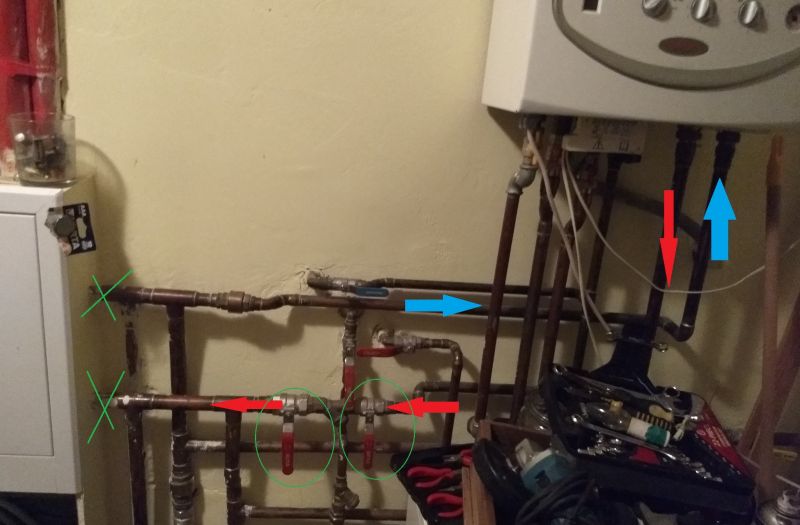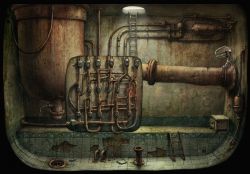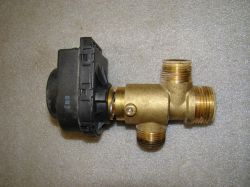For me, for a 1-function boiler, you have too many pipes coming out of the boiler, and the dimensions do not indicate that it was supposed to be a boiler with an integrated storage tank.
The number of outputs is more suitable for a 2-function boiler.
The 1-function boiler needs a water heater with a coil, which I can't see in the photo.
Generally, heating which when using hot water is a mistake and indicates that the three-way valve is whacked and passes water into the heating circuit, which with flow water heating should manifest as a decrease in capacity for hot water, and if you have a tank with a coil, you lose more energy than in reality need.
I don't know if your closing is correct because I can't see everything and it is a chaotic installation for me.
Generally, the heating (boiler) water heats up on the boiler in the primary exchanger and continues to be directed to the radiators.
In the case of domestic hot water, the same heated boiler water at the 2-function boiler instead of to the radiators is directed to the plate heat exchanger built into the boiler via a 3-way valve. In this plate heat exchanger, cold tap water is heated and already heated it is directed to the tap.
With a single-function boiler, during the dhw heating, the boiler water instead of the plate heat exchanger goes to the coil built into the dhw tank, thanks to which the tap water accumulated in the tank is heated. In other words, a coil with hot water flowing in it is such an equivalent of a hot heating spiral from a traditional electric kettle.
The domestic hot water tank itself is usually near the boiler, it can be standing or hanging.
With these basics, you can analyze how hot boiler water should flow to heat only radiators or only hot water
At the moment, it looks like the 3-way valve needs to be replaced or possibly cleaned, closing valves manually is more to powder the corpse than solving the problem






